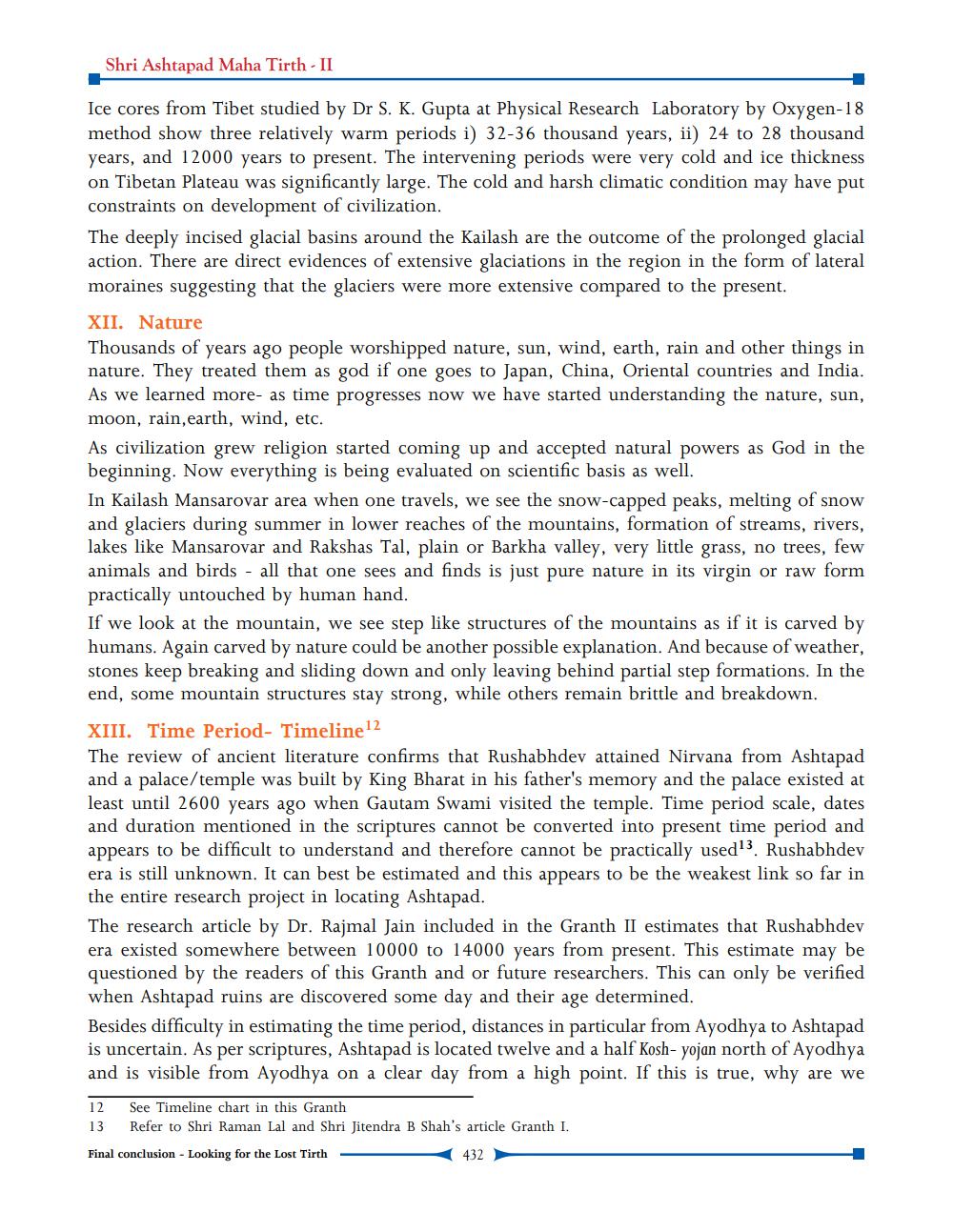________________
Shri Ashtapad Maha Tirth - II
Ice cores from Tibet studied by Dr S. K. Gupta at Physical Research Laboratory by Oxygen-18 method show three relatively warm periods i) 32-36 thousand years, ii) 24 to 28 thousand years, and 12000 years to present. The intervening periods were very cold and ice thickness on Tibetan Plateau was significantly large. The cold and harsh climatic condition may have put constraints on development of civilization.
The deeply incised glacial basins around the Kailash are the outcome of the prolonged glacial action. There are direct evidences of extensive glaciations in the region in the form of lateral moraines suggesting that the glaciers were more extensive compared to the present.
XII. Nature
Thousands of years ago people worshipped nature, sun, wind, earth, rain and other things in nature. They treated them as god if one goes to Japan, China, Oriental countries and India. As we learned more- as time progresses now we have started understanding the nature, sun, moon, rain, earth, wind, etc.
As civilization grew religion started coming up and accepted natural powers as God in the beginning. Now everything is being evaluated on scientific basis as well.
In Kailash Mansarovar area when one travels, we see the snow-capped peaks, melting of snow and glaciers during summer in lower reaches of the mountains, formation of streams, rivers, lakes like Mansarovar and Rakshas Tal, plain or Barkha valley, very little grass, no trees, few animals and birds - all that one sees and finds is just pure nature in its virgin or raw form practically untouched by human hand.
If we look at the mountain, we see step like structures of the mountains as if it is carved by humans. Again carved by nature could be another possible explanation. And because of weather, stones keep breaking and sliding down and only leaving behind partial step formations. In the end, some mountain structures stay strong, while others remain brittle and breakdown.
XIII. Time Period- Timeline 12
The review of ancient literature confirms that Rushabhdev attained Nirvana from Ashtapad and a palace/temple was built by King Bharat in his father's memory and the palace existed at least until 2600 years ago when Gautam Swami visited the temple. Time period scale, dates and duration mentioned in the scriptures cannot be converted into present time period and appears to be difficult to understand and therefore cannot be practically used13. Rushabhdev era is still unknown. It can best be estimated and this appears to be the weakest link so far in the entire research project in locating Ashtapad.
The research article by Dr. Rajmal Jain included in the Granth II estimates that Rushabhdev era existed somewhere between 10000 to 14000 years from present. This estimate may be questioned by the readers of this Granth and or future researchers. This can only be verified when Ashtapad ruins are discovered some day and their age determined.
Besides difficulty in estimating the time period, distances in particular from Ayodhya to Ashtapad is uncertain. As per scriptures, Ashtapad is located twelve and a half Kosh-yojan north of Ayodhya and is visible from Ayodhya on a clear day from a high point. If this is true, why are we
12
13
See Timeline chart in this Granth
Refer to Shri Raman Lal and Shri Jitendra B Shah's article Granth I.
Final conclusion - Looking for the Lost Tirth
432




